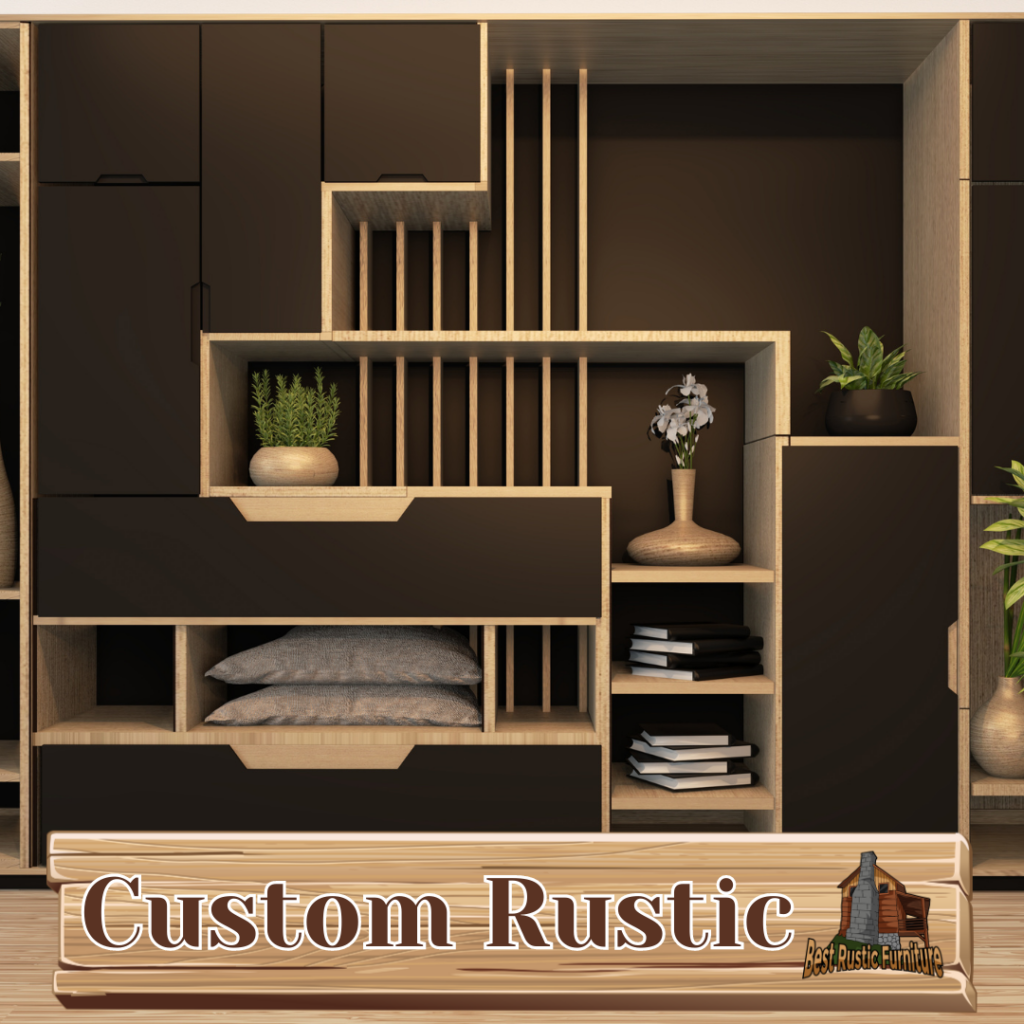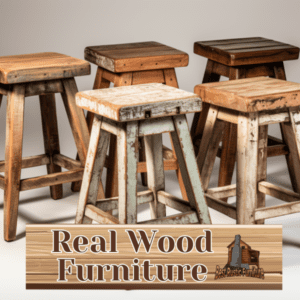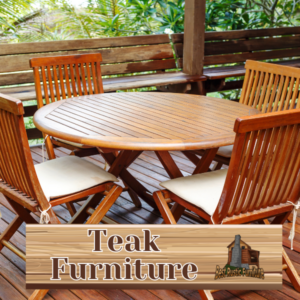
Custom furniture offers a unique and personalized approach to furnishing your space. Unlike ready-made furniture, which is mass-produced and readily available, custom furniture is designed and crafted specifically according to your preferences and requirements. It provides a range of benefits that go beyond what ready-made options can offer.
One of the main benefits of custom furniture is personalization and unique design. With custom furniture, you have the freedom to choose the design, style, and materials that align with your taste and complement your space perfectly. This allows you to create one-of-a-kind pieces that reflect your personality and add a touch of individuality to your home.
Another advantage is the quality craftsmanship and materials used in custom furniture. Unlike mass-produced furniture, which is often made with lower-quality materials and techniques, custom furniture is crafted by skilled artisans who prioritize attention to detail and use high-quality materials. This ensures that your custom pieces are built to last and withstand the test of time.
One of the key reasons people choose custom furniture is that it offers a perfect fit for their space. Whether you have unique room dimensions or specific layout requirements, custom furniture can be tailored to fit your space perfectly. This eliminates the hassle of trying to find ready-made furniture that may not fit your room’s dimensions or style requirements.
Furthermore, custom furniture is a long-term investment. While ready-made furniture may need to be replaced frequently due to wear and tear or changing trends, custom pieces are built to your specifications and with durability in mind. This means that you can enjoy your custom furniture for many years to come, knowing that it will stand the test of time.
When it comes to cost, several factors can affect the price of custom furniture. Design complexity, choice of materials, size and scale of the piece, and additional features and customization can all impact the overall cost. It’s important to consider these factors and discuss them with the custom furniture maker to get a clear understanding of the pricing.
Similarly, the time frame for custom furniture can vary depending on several factors. The design and planning stage, material sourcing and ordering, and production and assembly all contribute to the overall time frame. It’s important to have a clear timeline and regular updates from the custom furniture maker to manage your expectations.
Key takeaways:
- Personalization and unique design: Custom furniture allows for personalized design choices, ensuring a unique piece that reflects your individual style and preferences.
- Quality craftsmanship and materials: Custom furniture is crafted with attention to detail and a focus on using high-quality materials, resulting in furniture that is durable and long-lasting.
- Timelines and updates: When ordering custom furniture, expect to be involved in the consultation and design process, with regular updates on the project timeline and progress. This ensures that your vision is being translated into reality.
What is Custom Furniture?
Custom furniture refers to furniture that is specifically designed and made to meet the unique needs and preferences of an individual or a space. Unlike mass-produced furniture, custom furniture is crafted with attention to detail and can be customized in terms of size, shape, materials, and finishes. This allows individuals to have furniture that perfectly fits their style, space, and functional requirements. Whether it’s a custom dining table, a built-in bookshelf, or a bespoke sofa, custom furniture offers a personalized touch and creates a one-of-a-kind look for any home or office.
Fun Fact: Did you know that the concept of custom furniture dates back to ancient civilizations like Egypt and Greece, where furniture was handcrafted for kings, nobles, and important figures?
What is Custom Furniture?
How is Custom Furniture Different from Ready-Made Furniture?
Custom furniture and ready-made furniture differ in several ways:
- Design: Custom furniture is made to your specifications, allowing for personalized design and unique features.
- Craftsmanship: Custom furniture is typically crafted with higher-quality materials and superior craftsmanship, resulting in a more durable and long-lasting piece.
- Fit: Custom furniture is built to fit your space perfectly, maximizing its functionality and aesthetics.
- Investment: While ready-made furniture may be more affordable upfront, custom furniture is a long-term investment that adds value to your home.
Pro-tip: When deciding between custom and ready-made furniture, consider your budget, design preferences, and the specific needs of your space to make an informed choice.
Benefits of Custom Furniture
Looking to furnish your space? Discover the exceptional advantages of custom furniture. From personalized designs to superior craftsmanship and materials, it offers a perfect fit that lasts. With unique styles tailored to your taste and needs, custom furniture becomes a long-term investment worth every penny. Get ready to explore the ins and outs of this innovative approach to interior design. Let’s dive into the enticing realm of custom furniture and unlock a world of possibilities for your home.
1. Personalization and Unique Design
Personalization and unique design are key advantages of choosing custom furniture. When opting for custom furniture, you have the opportunity to:
- Create a one-of-a-kind piece that reflects your personal style and preferences
- Select specific materials, finishes, and fabrics to match your desired aesthetic
- Customize the dimensions and proportions to ensure a perfect fit for your space
- Incorporate unique features and details that make the furniture truly special
Pro-tip: Before ordering custom furniture, it’s helpful to gather inspiration and create a clear vision for the design you want. This will guide the consultation and design process, resulting in a furniture piece that truly represents your individuality.
2. Quality Craftsmanship and Materials
When it comes to custom furniture, the quality craftsmanship and materials used in its creation are key factors that set it apart. Here are some important points to consider:
- Craftsmanship: Custom furniture is meticulously crafted by skilled artisans who take pride in their work. They pay attention to every detail and ensure that the furniture is built to last, reflecting the emphasis on quality craftsmanship.
- Materials: High-quality materials are carefully chosen for custom furniture. From solid wood to premium fabrics and finishes, each material is selected with a focus on durability, aesthetics, and overall quality.
- Attention to detail: Custom furniture allows for personalized touches and intricate detailing. It can include unique features like hand-carved designs, decorative inlays, or specialty finishes that enhance the overall craftsmanship and attention to detail.
- Durability and longevity: Custom furniture is built to withstand the test of time due to its focus on quality materials and craftsmanship. It is an investment meant to be enjoyed for years to come, reflecting its durability and longevity.
- Customization options: With custom furniture, you have the ability to choose specific materials and finishes that align with your personal style and preferences. This ensures that the end result is a piece that is truly unique to you, highlighting the importance of quality craftsmanship and materials.
3. Perfect Fit for Your Space
Choosing custom furniture offers the advantage of obtaining pieces that are a perfect fit for your space and meet your specific requirements.
- Custom dimensions: Custom furniture allows you to tailor the dimensions of the piece to achieve a perfect fit in your space, ensuring maximal functionality and aesthetic appeal.
- Custom layouts: You can design custom furniture to match the layout and flow of your room, optimizing the use of space and creating a seamless design.
- Custom storage solutions: With custom furniture, you have the flexibility to include built-in storage options that are tailored to your specific needs, helping you achieve a perfect fit for your space while keeping it organized and clutter-free.
- Custom style and design: Custom furniture allows you to choose the style, materials, and finishes that align with your personal taste and complement the overall design of your space.
Pro-tip: Consider working with a professional furniture designer or craftsman who specializes in custom pieces to ensure the perfect fit and outstanding quality.
4. Long-Term Investment
Investing in custom furniture is a wise decision for long-term value and satisfaction. Here are some key reasons why custom furniture is a lasting investment:
- Unique Design: Custom furniture allows you to express your personal style and create a one-of-a-kind piece tailored to your taste.
- Quality Craftsmanship: Custom furniture is meticulously crafted by skilled artisans, ensuring excellent quality and durability.
- Perfect Fit: Custom furniture is designed to perfectly fit your space, maximizing functionality and aesthetics.
- Long-Term Durability: Custom furniture is built to withstand the test of time, using high-quality materials and superior construction techniques.
- Added Value: Custom furniture adds value to your home or office, enhancing its overall appeal and increasing its resale value.
Fact: Studies have shown that investing in quality custom furniture can actually save you money in the long run, as you won’t have to replace cheaply made or ill-fitting pieces. Custom furniture is truly a long-term investment.
Factors Affecting the Cost of Custom Furniture
Discover how various factors contribute to the cost of custom furniture, from design complexity to choice of materials, size and scale, and additional features. Uncover the influence each of these elements has on the overall price tag, and gain insights into what to expect when investing in bespoke pieces for your home. Prepare to be amazed as we delve into the world of custom furniture and explore the many considerations that go into creating truly unique and personalized pieces that reflect your style and preferences.
1. Design Complexity
When it comes to custom furniture, design complexity is a crucial factor to consider. The level of intricacy in the design will have an impact on both the cost and the time frame for the creation of the piece. Highly intricate designs that necessitate detailed workmanship or unique shapes will require a greater amount of time and expertise, ultimately raising the overall cost. Conversely, simpler designs with sleek lines and minimal embellishments will be quicker to produce and will also be more cost-effective. Therefore, it is imperative to discuss the design complexity with the furniture maker before placing an order for custom furniture, so as to ensure that it aligns with your desired budget and timeline.
2. Choice of Materials
The choice of materials is a crucial aspect when it comes to custom furniture. It dictates not only the aesthetic appeal of the piece but also its overall durability and functionality. Different materials offer various benefits and styles to suit different preferences and needs.
In the selection of materials, consider factors such as:
1. Wood: Solid wood like oak or mahogany offers a classic and timeless look, while engineered wood provides affordability and stability.
2. Upholstery: Fabrics such as linen or velvet offer comfort and luxurious texture, while leather provides durability and a sophisticated look.
3. Metal: Steel or aluminum can give a contemporary and sleek appearance, while brass or copper can add elegance and warmth.
4. Finishes: Different finishes such as lacquer or stain can enhance the color and texture of the materials.
By carefully considering the choice of materials, you can ensure that your custom furniture meets both your aesthetic preferences and functional needs.
3. Size and Scale of the Piece
When it comes to custom furniture, the size and scale of the piece play a crucial role in its design and functionality. The appropriate dimensions ensure that the furniture fits perfectly in your space and provides optimal comfort and usability. Factors such as room size, furniture placement, and intended use must be considered when determining the size and scale of the piece. By carefully measuring and assessing these factors, custom furniture can be tailored to meet your specific needs and preferences. Whether it’s a compact sofa for a small living room or a grand dining table for entertaining, size and scale are key considerations in creating furniture that enhances your space.
Suggestions:
- Measure your space accurately before ordering custom furniture to ensure a perfect fit.
- Consider the flow and function of the room when deciding on the size and scale of the piece.
- Consult with a professional furniture maker to guide you in determining the appropriate dimensions for your custom furniture.
4. Additional Features and Customization
When it comes to custom furniture, incorporating additional features and customization options allows you to create a truly unique piece that perfectly suits your specific needs and preferences. Here are some key considerations:
- Custom finish: Choose from a variety of finish options, such as paint colors, stains, or distressed finishes, to give your furniture a personalized touch.
- Hardware selection: Personalize your furniture by selecting different knobs, handles, or pulls. This will not only add character but also enhance its overall style.
- Upholstery choices: Create the perfect look and feel for your furniture by selecting from a wide range of fabric or leather options.
- Functional features: Get creative with the design by customizing it with additional storage compartments, hidden drawers, or built-in charging ports, making your furniture both functional and aesthetically appealing.
Let me tell you a true story: There was a couple who needed a custom dining table that would fit their compact space while accommodating their growing family. They approached a skilled custom furniture maker who added hidden extensions to the table. This innovative feature allowed the table to expand when needed, providing the perfect solution that combined functionality with appealing aesthetics.
Factors Affecting the Time Frame for Custom Furniture
When it comes to custom furniture, time is a crucial factor to consider. In this section, we’ll uncover the key elements that affect the time frame for creating one-of-a-kind pieces. From the meticulous design and planning stage to the intricate process of material sourcing and ordering, and finally, the precise production and assembly phase, we’ll explore the various factors that contribute to the overall timeline. Get ready to dive into the fascinating world of custom furniture creation and discover what it takes to make your dream piece a reality.
1. Design and Planning Stage
- Define your goals and requirements for the custom furniture.
- Work with a designer or furniture consultant to create a concept and design.
- Determine the dimensions and specifications of the furniture piece.
- Select the materials, finishes, and hardware that align with your vision.
- Review the design plans and make any necessary revisions.
- Get a detailed cost estimate for the project.
- Discuss the timeline for the design and planning stage.
During the design and planning stage, it’s crucial to communicate your preferences, provide feedback, and ask questions. This stage lays the foundation for a successful custom furniture project, ensuring that the final piece meets your expectations and needs.
Remember to be open to the designer’s suggestions and expertise, as they can offer valuable insights and ideas to enhance the design.
2. Material Sourcing and Ordering
When ordering custom furniture, the process of material sourcing and ordering is a crucial step in ensuring the quality and design of the final product.
- Research: Begin by researching different materials available, such as wood, metal, or upholstery fabrics. Consider the durability, aesthetic appeal, and suitability for your specific furniture piece.
- Consultation: Work closely with your furniture maker or designer to discuss material options and obtain samples. This will allow you to visualize how different materials will look and feel.
- Budget: Determine your budget and work with your designer to find materials that fit within that range. They can help you choose options that achieve the desired look without compromising quality.
- Ordering: Once you have chosen the materials, your furniture maker will handle the process of material sourcing and ordering. They will ensure that the materials are of the highest quality and meet the specifications for your custom furniture piece.
3. Production and Assembly
Production and assembly are crucial stages in the process of creating custom furniture. During the production stage, skilled craftsmen use high-quality materials to bring the design to life. Attention to detail ensures that each piece is crafted with precision and care. The assembly stage involves carefully putting together different components to create the final product.
| Stage of Production and Assembly | Description |
|---|---|
| Production | Skilled craftsmen use high-quality materials to create custom furniture. |
| Assembly | Different components are carefully assembled to complete the final piece. |
To ensure a successful production and assembly process, clear communication and collaboration between the client and the furniture maker are essential. This helps to ensure that the final product meets the client’s expectations. The use of top-notch materials and skilled craftsmanship guarantees the durability and quality of the custom furniture.
What to Expect When Ordering Custom Furniture?
Get ready to discover what awaits you when you decide to order custom furniture! In this section, we’ll dive into the exciting journey of bringing your dream furniture to life. From the initial consultation and design process to the selection of materials and project timeline, we’ll cover it all. Buckle up for an inside look at how your unique furniture will be crafted and delivered, turning your imagination into reality.
1. Consultation and Design Process
The consultation and design process for custom furniture involves several key steps:
- Initial consultation: Meet with a furniture designer or manufacturer to discuss your vision, needs, and preferences.
- Concept development: The designer will create design concepts and renderings based on your requirements and style.
- Material selection: Choose the type of wood, fabric, finishes, and other materials for your custom piece.
- Measurements and specifications: Provide accurate measurements and specifications for the furniture to ensure a perfect fit.
- Revision and approval: Review the design, make any necessary revisions, and give final approval before production begins.
- Production and assembly: Skilled craftsmen will build the furniture according to the approved design, using high-quality materials.
- Quality control: The finished piece will undergo rigorous quality checks to ensure it meets all standards and specifications.
- Delivery and installation: The furniture will be safely delivered to your location and professionally installed in the designated space.
2. Material Selection and Samples
| 2. Material Selection and Samples |
| When choosing materials for custom furniture, it’s important to consider their durability, aesthetics, and sustainability. |
| 1. Durability: Select materials that can withstand daily use and maintain their quality over time. For example, hardwoods like oak or maple are known for their strength and longevity. |
| 2. Aesthetics: Consider the desired look and feel of your furniture. Options range from natural finishes to painted surfaces. Request for samples to visualize how different materials will blend with your existing decor. |
| 3. Sustainability: Choose eco-friendly materials like bamboo or reclaimed wood to minimize environmental impact. Ensure the materials used are responsibly sourced and meet sustainability certifications. |
3. Project Timeline and Updates
| Stage | Description |
|---|---|
| Consultation and Design Process | Collaborate with the furniture maker to discuss your needs, preferences, and design ideas. |
| Material Selection and Samples | Review and select the materials to be used for your custom furniture. This may involve receiving samples to ensure satisfaction. |
| Project Timeline and Updates | Receive a detailed timeline outlining the different stages of the project. Regular updates will be provided to keep you informed of the progress. |
| Delivery and Installation Process | After completion, the custom furniture will be delivered to your location and professionally installed. |
4. Delivery and Installation Process
- Confirmation of order details and delivery schedule is a crucial part of the delivery and installation process.
- Preparing the custom furniture for delivery, including proper packaging and protection, is an essential step.
- Scheduling a convenient delivery date and time is an important aspect of the delivery and installation process.
- The delivery team will arrive at your location to complete the delivery and installation process.
- Inspecting the furniture for any damages or defects is a necessary step before proceeding further.
- Placing the custom furniture in your desired location within your space is part of the delivery and installation process.
- If required, the delivery team will assemble and install any components or accessories associated with the furniture.
- A final inspection will be conducted to ensure everything is in place and meets your satisfaction.
- To complete the process, the delivery team will remove any packaging materials and clean up the area.
To ensure a smooth delivery and installation process, it is strongly recommended to provide clear instructions and measurements for your space, and communicate any access limitations or special requirements to the furniture company.
Some Facts About Custom Furniture: Cost, Time, and What to Expect:
- ✅ Custom furniture can be expensive, but there are affordable options available if you know where to look and what to buy. (Source: Our Team)
- ✅ It is important to research prices and cost factors in advance to avoid sticker shock at the cash register. (Source: Our Team)
- ✅ Proper techniques for measuring and ordering custom furniture should be followed to avoid costly mistakes. (Source: Our Team)
- ✅ Choosing high-quality materials and considering local designers or manufacturers can help offset the cost of the project. (Source: Our Team)
- ✅ Supervision of the production process may be necessary to ensure the desired quality, and this may come at an additional cost. (Source: Our Team)
Frequently Asked Questions
1. How much does custom furniture cost?
Custom furniture can vary in price depending on multiple factors such as the type of wood, size of the piece, and intricate details. Prices for different types of furniture from B&L Woodworking range from $1,000 for a bed frame to $4,000 for a desk. These prices are averages and may vary based on individual specifications.
2. Is custom furniture worth the investment?
Despite the higher cost, custom furniture is worth the investment as it offers unique and one-of-a-kind pieces that can enhance the appearance of your home. Additionally, the quality of custom furniture is unmatched by mass-produced pieces, providing longevity and easier maintenance.
3. How can I save money on custom furniture?
To save money on custom furniture, you can consider choosing high-quality materials and opting for local designers or manufacturers. Additionally, supervising the production process may ensure the desired quality, but it may come at an additional cost. DIY options are also available for those with experience in crafting, which can save time and money.
4. What factors influence the final price tag of custom furniture?
The final price tag of custom furniture is influenced by multiple factors such as the complexity of table leg design, type of wood used, carving complexity of chairs, size of mattress for bed frames, type of desk, and material used for sofas. Additionally, any additional leaves for tables, fabric changes, or hardware changes may also affect the overall cost.
5. How long does it take to receive custom furniture?
The time it takes to receive custom furniture can vary depending on the complexity of the design and the workload of the furniture builder. It is recommended to inquire about the estimated lead time before placing an order. B&L Woodworking offers in-stock pieces as well as the option to have something unique custom-built.
6. What are the advantages of custom furniture compared to off-the-shelf furniture?
Custom furniture offers several advantages over off-the-shelf furniture. It allows buyers to get exactly what they want, from the design to the colors and materials used. Custom furniture is also built to last, easier to maintain, and comes with cleaning instructions. Furthermore, the uniqueness and quality of custom furniture are unmatched by mass-produced pieces.






